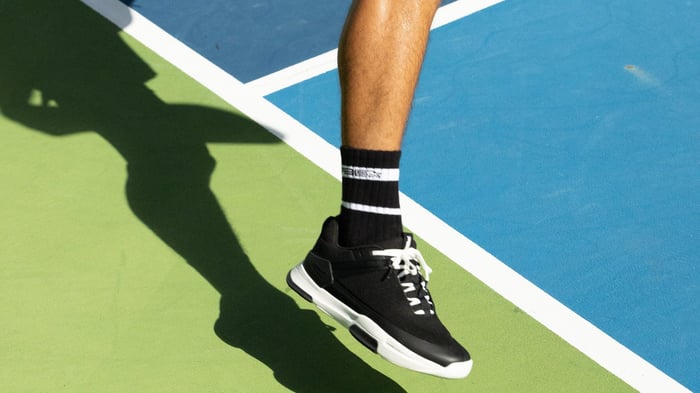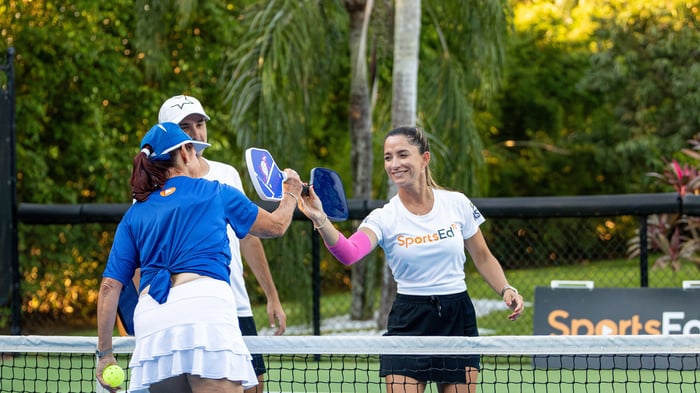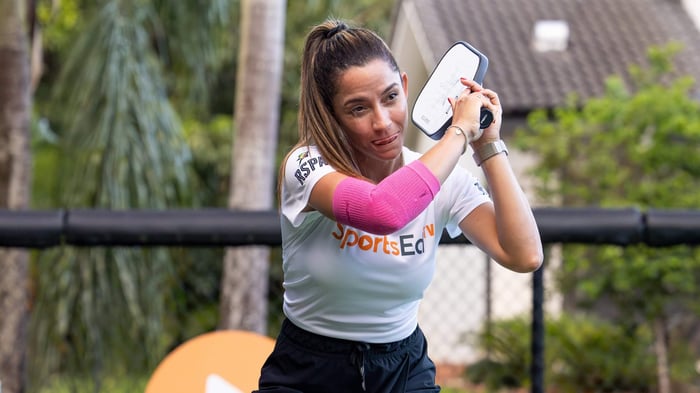Key takeaways:
Proper warm-up routines and dynamic stretches prevent common pickleball injuries and foster team camaraderie.
Choosing the right gear, such as court-specific shoes and paddles with cushioned grips, can significantly reduce strain and improve performance.
Innovative recovery strategies and open communication within your pickleball community ensure safe returns to play and long-term game enjoyment.
Pickleball injury prevention is essential to keeping players active, confident, and fully engaged in the sport they love. Prioritizing safety improves performance and ensures players can keep showing up for the matches, connections, and progress that make the game so rewarding. By taking simple, intentional steps to protect your body, you create a safer and more enjoyable environment for yourself and everyone you play with.
From dynamic warm-ups to thoughtful recovery routines, building injury prevention into your routine helps extend your playing years and strengthens your role as a supportive, informed teammate. When entire groups adopt these habits, it creates a culture of awareness and care that benefits the whole community. At PB5star, we support that commitment with performance gear designed to help you move confidently, stay protected, and lead by example every time you hit the court.
Understanding the most common pickleball injuries
The most common pickleball injuries affect the body areas that strain most during fast-paced rallies and strategic play. Ankle and knee sprains are especially common, often resulting from quick direction changes or unbalanced landings. Shoulder and elbow overuse injuries, like tennis elbow, develop gradually through repeated paddle swings and can catch even experienced players off guard when they push through discomfort.
Players over 60 may face added challenges due to natural flexibility, stability, and recovery time changes. However, innovative injury prevention isn’t just for older adults; every player benefits from awareness and preparation. When players feel comfortable sharing concerns like lingering soreness or joint pain, adjusting intensity and playing style becomes easier to keep everyone active, supported, and enjoying the game.
Warm-up and stretching: building a safer, stronger team
Getting your group ready to play goes beyond grabbing paddles and heading to the court. A proper pickleball warm-up and stretching routine brings everyone together while preparing bodies for the quick movements and sudden direction changes that make the game so exciting.
Start with dynamic movements: Incorporate arm circles, walking lunges, and torso twists to warm up the muscles used in typical pickleball motions.
Skip static stretching: Avoid holding long stretches before play, as static stretching can temporarily reduce power and responsiveness, both essential for fast-paced net play and sharp directional changes.
Create accountability partners: Encourage teammates to check in with each other about soreness or stiffness before games begin. This promotes communication, safety, and a more supportive playing environment.
Use warm-up time: During warm-ups, take a few minutes to share strategy tips, offer encouragement, and reinforce the sense of camaraderie that makes group play more meaningful.
Focus on joint mobility: Incorporate leg swings, shoulder rolls, and similar exercises to activate joints in lateral moves and overhead shots. This increases the range of motion and reduces injury risk during play.
Practice shared warm-up routines: When everyone follows the same warm-up, it creates a consistent group ritual that strengthens team bonds and models good habits.
Everyone participating in the same warm-up routine creates a shared ritual that strengthens team bonds while reducing injury risk. This is especially valuable for experienced players who can model good habits for group newcomers.
Choosing gear that supports your game and your health
The right equipment makes all the difference between an energized game and one that leaves you sidelined. Quality pickleball gear choices protect your body while helping you play confidently and connect with your community.
Invest in court-specific shoes: Look for footwear with strong lateral support and a solid grip to protect your ankles during fast-paced rallies and sharp directional changes.
Choose moisture-wicking, flexible apparel: Wear clothing designed to move with your body and manage sweat during extended play.
Select paddles with cushioned grips: Minimize wrist and elbow strain using paddles that absorb shock and offer ergonomic balance.
Consider composite or graphite paddles: Choose from power and control materials. These lightweight options reduce physical stress on your joints and enhance efficiency in your game.
Prioritize proper fit over style: Ensure that all your gear fits correctly. A proper fit prevents blisters, chafing, and unnecessary muscle compensation that could lead to injury.
Maintain your equipment regularly: Check your shoes, paddles, and apparel for wear and tear. Keeping equipment in top condition prevents minor issues from escalating and supports long-term performance.
When you prioritize comfort, fit, and functionality, you create a foundation that allows you to move freely, play confidently, and avoid unnecessary injuries. Reliable equipment keeps you in the game longer and reinforces your commitment to your well-being and the community you play with.
Safe recovery and returning to play together
Returning to the court after an injury takes patience and an innovative strategy prioritizing long-term health. The most effective comeback begins with gradual return-to-play routines that rebuild strength and confidence. Start with gentle drills like practicing dinks or slow-motion serves, then progress to dynamic movements as your body adapts. This method helps prevent re-injury while allowing you to regain skills and timing.
Active healing keeps you connected to the game and your community, even when you can't play at full intensity. Light mobility exercises, gentle stretching, and foam rolling help maintain fitness while supporting recovery. Organizing group sessions for these techniques can turn your comeback into a bonding experience. Open communication with teammates fosters a supportive environment where everyone feels comfortable playing at their own pace.
Play Confident, Play Connected
Pickleball injury prevention empowers you to play consistently, lead confidently, and fully engage with your community. By making warm-ups, recovery habits, and supportive gear part of your routine, you reduce the risk of setbacks and create a more reliable, enjoyable playing experience for yourself and those around you.
A proactive approach to safety doesn’t just protect your body; it reinforces your role as a thoughtful teammate and leader. When everyone embraces injury prevention, a stronger, more connected community is built to last. At PB5star, we’re proud to support that mindset with apparel and footwear engineered for comfort, stability, and style, so you can keep moving confidently, match after match.
FAQs
What are the most common pickleball injuries, and how can we prevent them?
The most frequent injuries include muscle strains, fractures, and sprains, particularly affecting ankles, knees, and shoulders. Fractures increased 90-fold from 2002 to 2022, especially among players aged 60-69. Simple prevention starts with gradually building up your playing time and mixing other activities like walking, swimming, or yoga to strengthen supporting muscles.
How does warming up together reduce everyone's injury risk?
Group warm-ups create accountability while getting muscles and joints ready for all those quick movements that pickleball throws at you. Moving together through arm circles, leg swings, and light jogging gets blood flowing and loosens up tight spots better than holding static stretches before you play. Everyone joining the same routine builds team spirit while ensuring no one skips this important step that prevents muscle strains and joint injuries.
Which gear choices best support safe play for players of all skill levels?
Supportive court shoes with good grip are your best protection against ankle sprains and slips during those fast side-to-side movements. Choose paddles with the right grip size, and measure the length from your palm's base to your ring finger's tip to reduce strain on your wrists and elbows during long rallies. Moisture-wicking clothing that moves with you helps players stay comfortable and focused, while protective eyewear shields against stray balls or paddles.
What's the safest way to return to the court after an injury?
Start with easy, friendly rallies and slowly work your way back to competitive games over several sessions rather than jumping right back into intense matches. Listen to your body and talk openly with your playing partners about any concerns or limitations you might have. Staying active with gentle movement and supportive group activities keeps you connected to your pickleball community while giving your body the healing time it needs.








